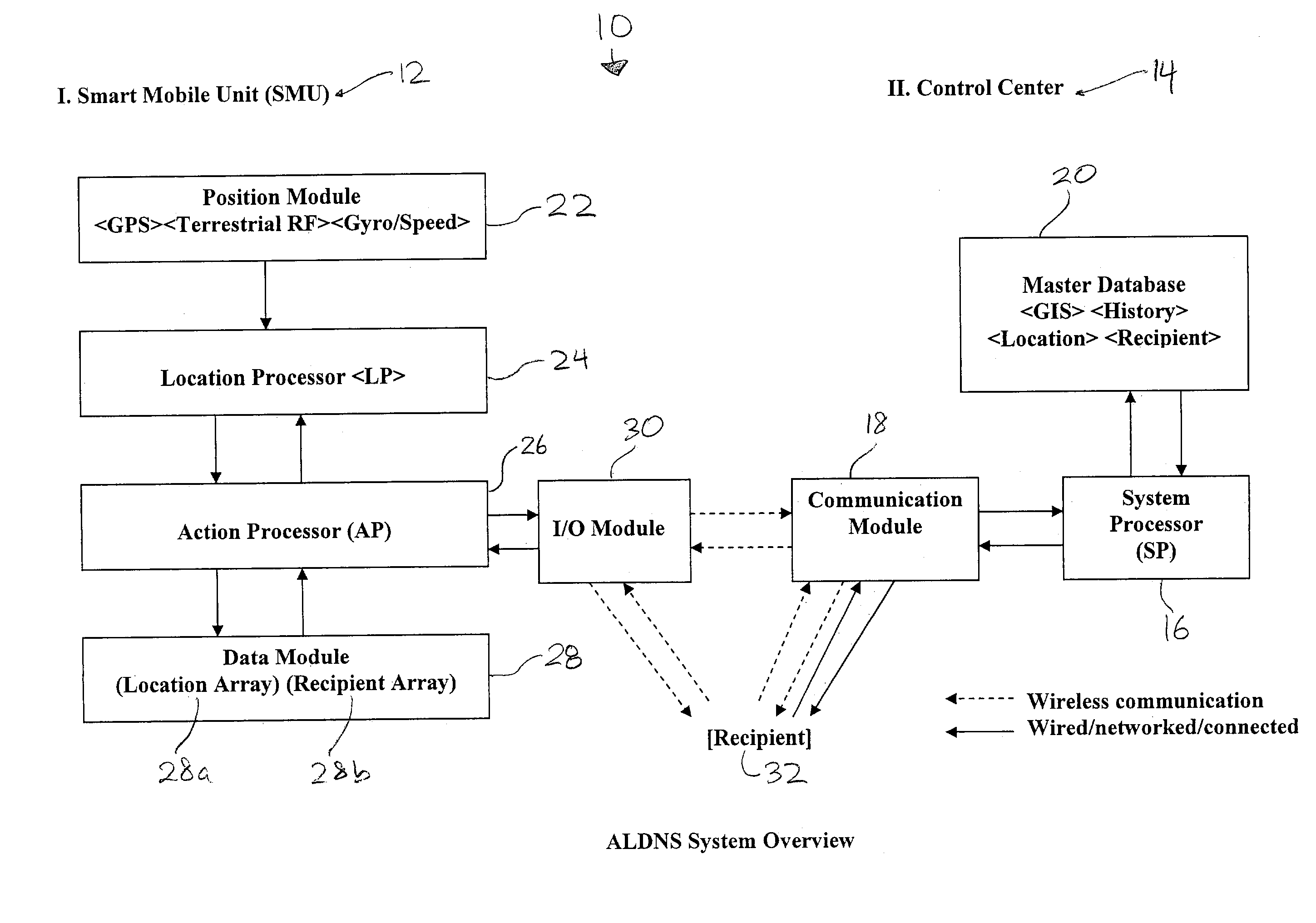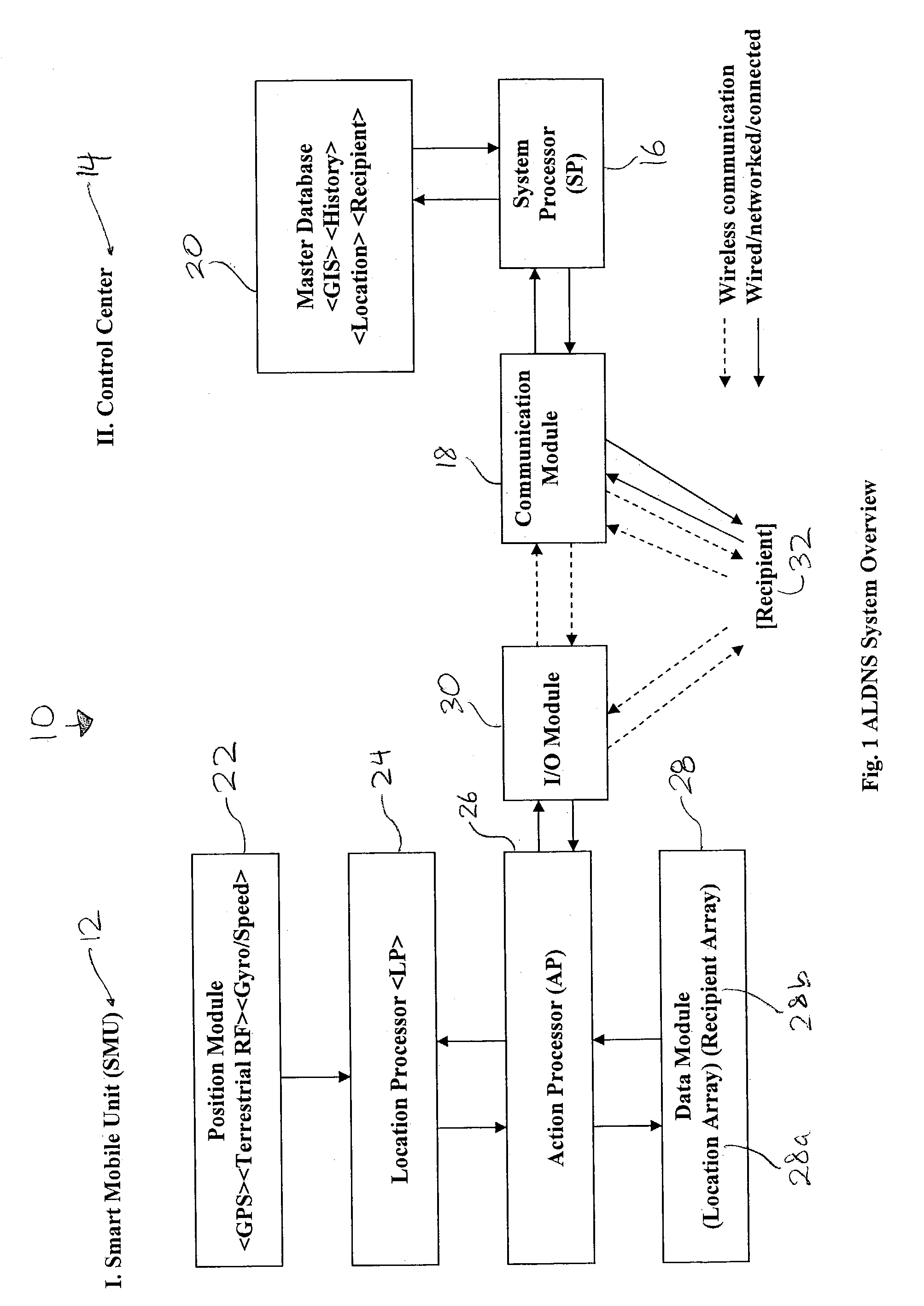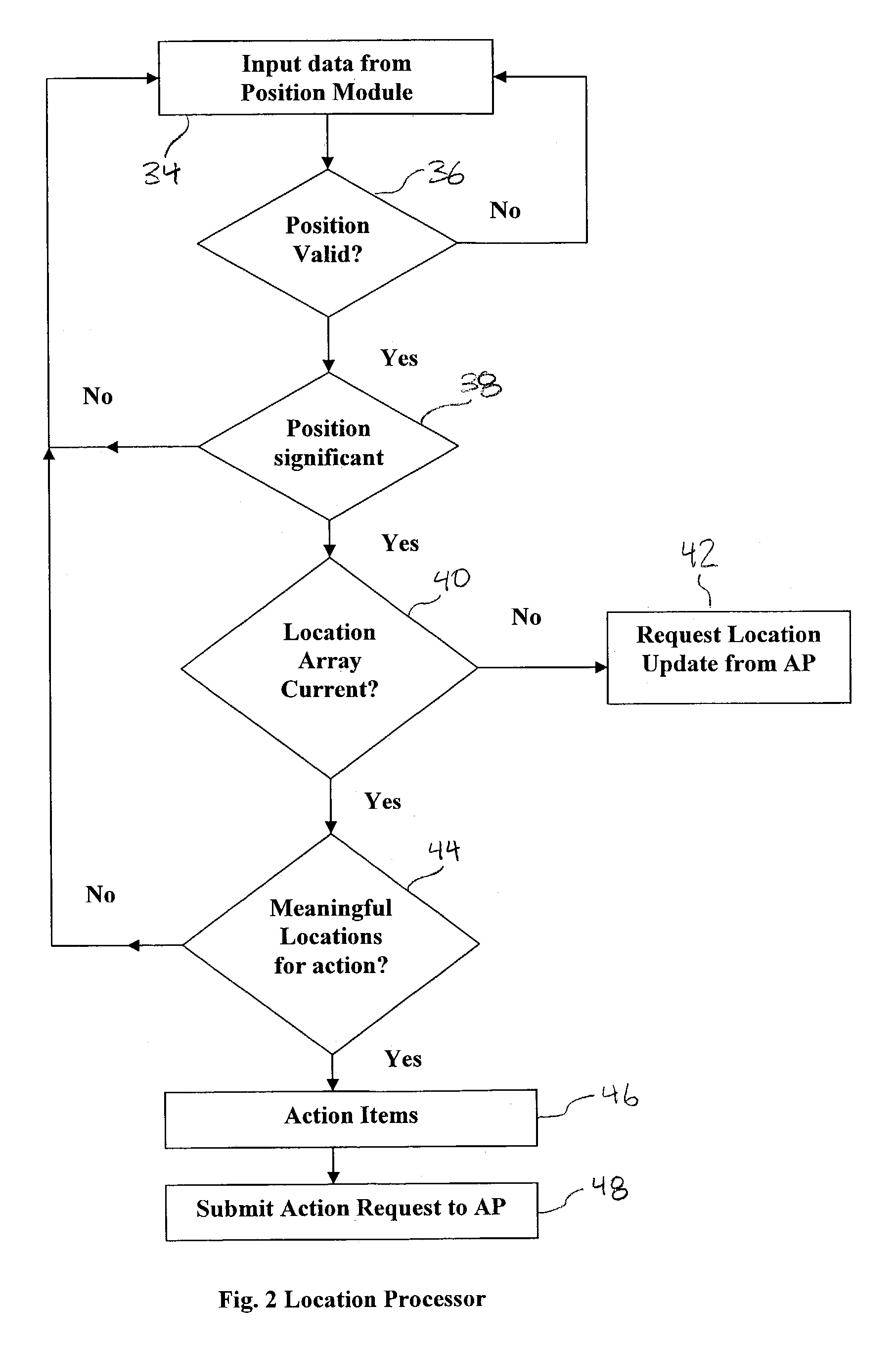Method and apparatus for an automated location-based, dynamic notification system (ALDNS)
a dynamic notification and location-based technology, applied in the field of computer software and hardware, can solve the problems of no actual implementation of the method presented in the prior art, no one has actually implemented it, and both devices are obsolete and no longer available on the mark
- Summary
- Abstract
- Description
- Claims
- Application Information
AI Technical Summary
Benefits of technology
Problems solved by technology
Method used
Image
Examples
Embodiment Construction
[0054]The ALDNS system, generally denoted by reference numeral 10 in FIG. 1, comprises:[0055](1) a smart mobile unit, or simply mobile unit, generally denoted by reference numeral 12, which may comprise a hardware device to be installed in or on any moving object such as a bus, truck, bicycle, container, package, or anything that moves from one place to another; and[0056](2) a control center, generally denoted by reference numeral 14, which comprises one or more facilities each equipped with a computer server 16, communication equipment 18, a geographic information system (GIS), and a master database 20.
[0057]System 10 operates on one or more communication networks, including regular land-based telephone networks, cellular phone networks, wireless digital data networks such as wireless local area networks (WLAN), localized radio systems (RF), and / or satellite communication networks.
[0058]FIG. 1 is the overview of the ALDNS system 10 comprising smart mobile unit (SMU) 12 and control ...
PUM
 Login to View More
Login to View More Abstract
Description
Claims
Application Information
 Login to View More
Login to View More - R&D
- Intellectual Property
- Life Sciences
- Materials
- Tech Scout
- Unparalleled Data Quality
- Higher Quality Content
- 60% Fewer Hallucinations
Browse by: Latest US Patents, China's latest patents, Technical Efficacy Thesaurus, Application Domain, Technology Topic, Popular Technical Reports.
© 2025 PatSnap. All rights reserved.Legal|Privacy policy|Modern Slavery Act Transparency Statement|Sitemap|About US| Contact US: help@patsnap.com



